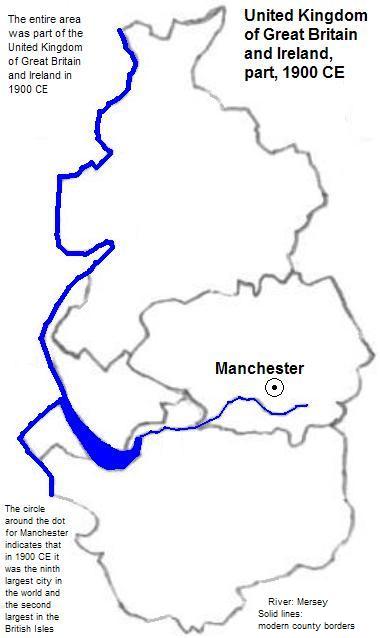
| To Duval Family Home Page | Europe | |
| To Chris Home Page | United Kingdom | |
| To Earth (Geography Home Page) |
Yet farther northwest of London than Birmingham, just above Wales and on the mouth of the Mersey is the seaport of Liverpool. East of it at an old Roman crossroads is Manchester. Liverpool and Manchester form the core of a metropolitan area with 4.2 million residents.
| Year | Population | Political entity |
| 1900 CE | 1,435,000 | United Kingdom of Great Britain and Ireland |
| 2001 CE | 4,065,000 | United Kingdom of Great Britain and Northern Ireland |

1. world-gazetteer.com, 2010 calculations, accessed 6/15/2011.
2. Estimate for 1900 in Tables of the World's Largest Cities, in Tertius Chandler, Four Thousand Years of Urban Growth, 2nd ed. (The Edwin Mellen Press, 1987). In 1900 Manchester was the second largest city in the British Isles and the ninth largest in the world. In 2000 Manchester-Liverpool was the second largest metropolitan area in the British Isles.